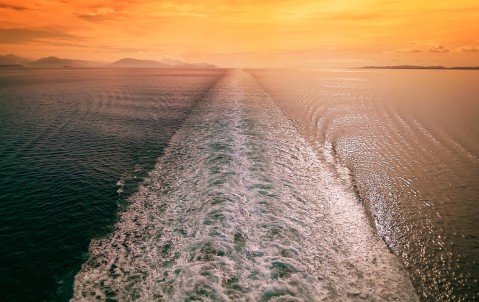Read the rest of the post ' Supersized cruise ships sound the alarm for (re)insurance industry '

Supersized cruise ships sound the alarm for (re)insurance industry
When it enters passenger service in January 2024, Royal Caribbean International’s Icon of the Seas will – at a gross tonnage of 250,800 – become the world’s largest cruise ship. While great news for the holidaying passenger, is the (re)insurance industry ready for the huge uplift in combined hull and liability costs of well over US$5bn? In addition to their size, increased complexity and the use of cutting-edge technology are also driving up vessel values more generally across the shipping industry which, together with inflation (both monetary and social), means potentially greater insured losses, greater demands on reinsurers for capacity and coverage, and the need for a rethink when it comes to existing programme structures currently slow to respond to a rapidly shifting risk profile.
Supersized costs
With capacity to carry up to 7,600 passengers, the Icon of the Seas will feature nearly 3,000 cabins, 20 decks and have a total length of 365 metres. Guests will enjoy seven pools, nine whirlpools, and six waterslides on board the first Royal Caribbean cruise ship to be powered by liquified natural gas and fuel cell technology. But with complex, supersized vessels like this –– come supersized costs. With a total hull value that could exceed US$2bn for the Icon of the Seas, together with a potential exposure liability value for passengers and crew of over US$3bn, the marine insurance and reinsurance markets will be taking on a single vessel exposure of well over US$5bn – higher than for any other passenger vessel in history. This trend of super-sized passenger will continue for the next few years when sister ships Apex of the Seas and Joy of the Seas enter the market in 2025 and 2026. Disney is also making waves, having acquired Disney Global Dream, expected to be the seventh largest cruise ship worldwide.
(Re)insurance concerns
From a (re)insurance perspective this exposure will create concerns given the highest hull value to date has been in the range of US$1.5bn. A potential US$5bn exposure – which at this value becomes as significant to reinsurers as several of the top peak energy assets – for Icon of the Seas means there is now a far larger single vessel exposure coming to the (re)insurance market with the potential catastrophe exposure intensified. Together with the impact of inflation and the increasing technological complexity of ships which are both combining to push up repair costs, there needs to be a reappraisal of how these significant exposures are managed. For reinsurers, for example, where historically an attachment level of around US$300m in respect of an original market loss has been the norm, it is likely that much more of that potential US$5n liability will quickly pass out of the insurance market and into the reinsurance market, with more minor incidents likely to attach and consequently increasing losses for reinsurers. Coupled with concerns arising from ‘nuclear verdicts’ in the liability courts and the scarcity of global war capacity available in the marine market in the wake of the Russia/Ukraine conflict, this really could be a perfect storm.
More cover, higher attachment points
For insurers, it’s critical to think about aggregations and what their exposures are, but – given the impact of inflation – if dollars are worth less, there will be a need to think about retaining more risk at the bottom end and buying increased levels of cover with reinsurance programmes having a higher attachment point. The challenge is, of course, programme structures are ingrained and slow to react to changing market dynamics until the losses start to mount. But the need to address these structures is pressing, not just because of the arrival of the Icon of the Seas, but also to reflect other key factors shaping the shipping industry.
Changing risk profile
Technological advances are making vessels costlier to repair and changing the risk profile, particularly given the cyber threat to systems. GPS spoofing, for example, where a ship is deceived into thinking it is at a different location is a known threat to navigation and could lead to a loss. According to a report by Ship Technology, in 2017, 20 vessels at Novorossiysk Commercial Sea Port “reported that their automatic identification system (AIS) traces erroneously showed their position as Gelendzhik Airport, around 32km inland”.
What will happen when the move towards fully autonomous ships becomes commonplace? There might be no plans for autonomous cruise vessels yet, but there could soon be autonomously navigating freight vessels and while many losses are caused by human error, autonomous shipping will introduce new risks and liabilities particularly around cyber risk. The physical risk could be greater too given the risk of container fires which are hard enough to fight on a crewed ship, let alone one that is uncrewed.
Price and structure
None of these issues – vessel size or technology – should be insurmountable for the (re)insurance industry and there is still plenty of appetite for the risk, but there must be a recognition of the changing risk profile of new ships coming to the market and how insurers and reinsurers will price and structure the risk. Ultimately, the more narrative and data insurers can provide to their reinsurers then the better the risk can be understood and priced appropriately.




